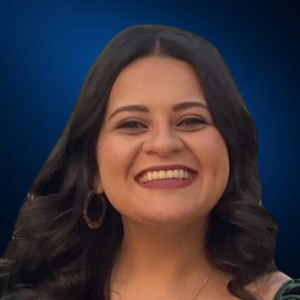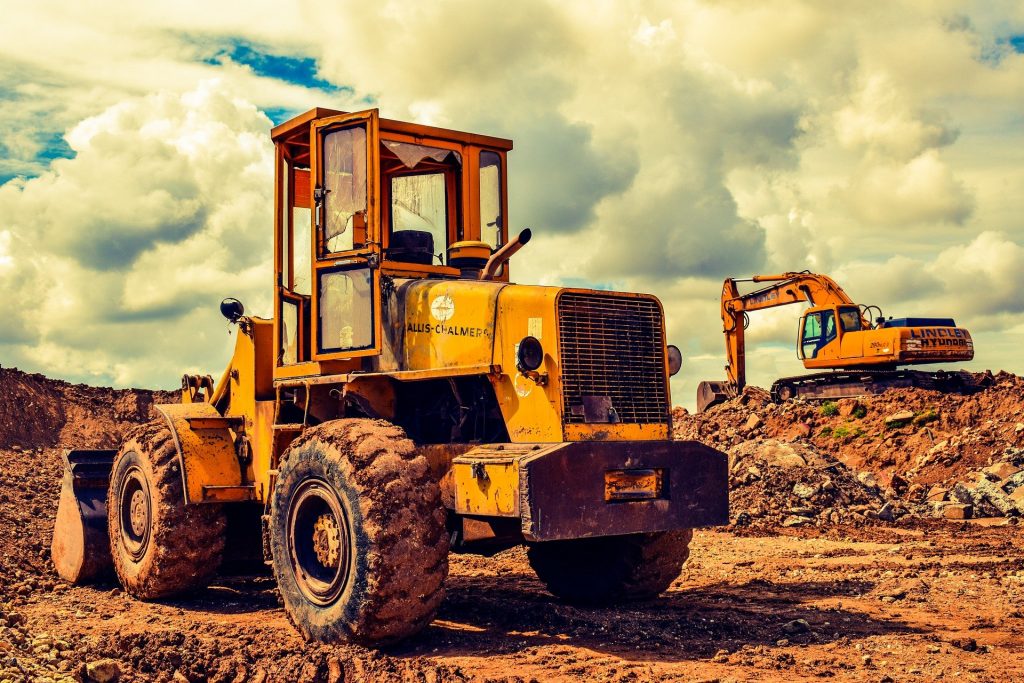Sustainability, whether a home or city, is learning how to efficiently manage what we have in a way that suits the people living, be it in a home or in a city.

Continuing population growth is projected to add 2.5 billion people to the world’s urban population by 2050. In fact, more than 1 million people a week are moving to urban environments and by 2050 more than two-thirds of the world’s population will live in cities. This massive urbanization presents many challenges in terms of health and wellbeing, safety and overall quality of life due to such issues as higher levels of pollution, climate change and waste management. A sustainable city examines its ecosystem holistically to make sure it is working for both citizens and the environment. This is especially important for Egypt, which is building more than 45 new cities by 2052, including the New Administrative Capital.
Below are excerpts from an interview with Sarah El Battouty, founder and chairman of ECOnsult, an environmental consultancy for architecture design, who shares insights on sustainable development in Egypt, setbacks in the sector and her hopes for the future.
The Q&A has been edited for length and clarity.
What does building sustainably mean?
It means forecasting the future even beyond your own generation, beyond your business model. It means forecasting what you can use today without depleting anything for the generations to come. It’s like trying to serve people you won’t even get to meet.
What are some features of a sustainable city?
It has to adapt to future needs, meaning it has to “last,” while still being relevant for the people inhabiting it in the years ahead. It has to be inclusive and community driven. People living in a sustainable city don’t just live together, they need to interact well despite cultural differences, age or gender. Cities are not just places to host people, but places for coexisting and practicing tolerance. In sustainable cities, services have to be attainable, they have to encourage physical and mental well-being. The main customer you try to serve when developing a sustainable city is you, human beings. Finally, the environmental aspect in terms of geographic location, resources and the nature of the place should be conserved, preserved and celebrated.
Can the location of a city determine its sustainability?
Location and being at the heart of the city is no longer the single factor. From the perspective of a designer, access to culture, beauty and resources is going to be a very critical thing in the future. Now, cities are not just seen within the realm of urban planning. Mobility is the future. How far are you from your job? How much time does it take for you to get from point A to Z? How much time do kids spend on school buses? All of these things create value for a sustainable city. Yet city planners will still go back to assess the well-being and the quality of life of the individual. It’s basically like what compounds try to offer in terms of accessibility to all kinds of goods and services. If you think of a city like a compound, but with a wider community, then this is the kind of model we are talking about.
Are you optimistic about the power of Egyptian architects to shape sustainable cities?
It’s very tricky to ask for a paradigm shift for such a sophisticated sector as construction. But what I am optimistic about is that the core customer, the Egyptian customer, is changing. I have lots of faith that suppliers of homes and areas in new cities will have to answer to the ever-increasing sophisticated, younger, fresh-minded clientele. There is a social change in awareness of one’s well-being and a lot of investment in social awareness programs. That means customers don’t just belong to specific income strata anymore, there is more interest now from this sector in developing low to medium-income housing and more common areas. There’s a shift in investment, whereas for a while we were just seeing lots of investment in high-end gated communities. Now it’s no longer just that. There’s variety in the market. There are social projects that are low-income projects and there are projects that are built around inclusion, like the Hayah Kareema program [a presidential initiative that supports Egypt’s poorest]. There’s also rural community development. We are looking outside the typical city, meaning there are new cities and there’s also investment in existing villages and cities. So this is all a fantastic opportunity for marketing departments, research departments and even designers to start really thinking about how to grab that market.
As a developer, do you see increasing awareness of sustainability as a challenge?
I see the surge in awareness around sustainability as a level of maturity for us as developers to look into. There’s a lot of open-mindedness, there’s a lot of curiosity about becoming greener, more resource-clever, saving energy and water. Sooner or later, people also will realize that we have a very sophisticated culture of sustainability that has existed for thousands of years. From a social perspective, it’s very obvious in Egypt that there’s a wide awakening, especially with younger customers who will eventually require housing. I think they will have more demands. They won’t settle as much. The entire sector has to respond.
What are some challenges of building sustainably in Egypt?
The challenges are not specific to one client, but to the entire market. We have extreme heat, water scarcity, rising prices and cost of living, and the removal of subsidies. So from an economic perspective, there’s a push toward some change to happen. Another challenge is time. It’s a double-edged sword to ask a developer or contractor to build sustainability, a very disruptive way of approaching the sector. It will require a generation of designers and advocates of sustainability to really get their economics sorted out. Designers need to give customers what they expect and have their argument straight about why going green is important economically. Clients need measurable results reflected in their savings. Only then they will see they can do all the green buildings and at a competitive cost. Here in Egypt, we have finally reached that ceiling of having several projects built sustainably at the same price as if they were built conventionally.
Egypt is building lots of new cities. Does every place need its own approach to achieve sustainability?
Yes, it does. Especially if it is geographically and culturally different. Compared to the New Valley, for example, building in South Sinai is a completely different terrain, geography, topography, culture, aesthetic, economy and availability of materials. The most sustainable way is to know exactly who you’re designing for and where you are. That’s very important because if you drift away from this very simple formula, then the economics won’t make sense. So if I am in the middle of Cairo and I decide to build something that is very complicated, you shouldn’t be surprised if it’s very costly. But the return on such an investment for building a very sophisticated theme park or developing the tallest tower is because the investment in it is for later on. To attract a different type of clientele, it is sometimes justified.
Can you share an example of how different building sustainably can be?
If you’re going to plan an entire city, then you really have to think about where you are and the needs of the people. If you’re in a coastal city you will have to know that a certain commodity, such as tourism, forms the income of these people and therefore you have to design around that. Whereas if you are somewhere else that’s predominantly agricultural, you have to also think about this. On the other end, if you are looking at an area where younger people tend to live and you want them to work there, then you need to create spaces for them. You need to digitize as much as possible, you need to be very well connected, and you need to have a smart city that can cater to the needs of all of these people.
Are there differences between building sustainably in developed vs. developing countries?
If we look at developed countries, they have access to data. Data allows you to really weigh in on exactly the pillars related to sustainability and the management aspect of it. When I know more about the people, when I have data, I can understand exactly what kind of buildings, what kinds of spaces they will be occupying. In developing countries, we are still working on that data aspect. In Egypt, we have a demographic of internal migration that isn’t always present in developed countries. So in one city, like Cairo, you can find people from 27 governorates. They commute or they move in and out, but their families are elsewhere and where they choose to marry and have children and acquire assets or buy into housing or send their kids to school is always shifting across different cities. So it’s very interesting when you want to build sustainably to understand where the people come from, where and how they will make their income. If you look at the project of Hayah Kareema, for instance, it’s catering to 58 million Egyptians. With a budget of nearly a trillion Egyptian pounds, it’s designed to help people across 4,000 villages. This sort of upgrading existing villages is very different from building the New Administrative Capital. The two different worlds have two different sets of needs and people. And this is why it’s incredibly important to invest in data gathering. This is why it takes longer to build sustainably, a continuous process. It just takes a lot more work in developing countries because we are still building our data systems.
Is building sustainably cheaper or more expensive?
It depends on how you’re building. In Egypt, it is relatively more expensive to build green because you are employing outsiders to design, importing materials and using a rating system and checklists that were not designed specifically for your country. The only reason we have reached this situation is that we, as architects, builders and developers, are celebrating the wrong kind of architecture. We need to be able to localize it. We have very sophisticated materials here in Egypt that are very attainable, available and very green. We need architects to change the way they look and celebrate the aesthetics of buildings. What is suitable for Sweden and London, is not suitable here in Egypt. We have to realize this. There are many countries that realized this, and they started creating their own language of design for sustainable buildings more suitable for them. I’ve been advocating this for the majority of my career. We don’t need to borrow anything: It’s all here, we need to revive it and create our own system. We have excellent minds, and Egypt is blessed with excellent weather and terrain to make it happen. We need the right investors and the right mindset.
Why the New Administrative Capital (NAC) is considered a model for sustainable urban development?
There’s an economic need for Egypt to function like a metropolitan city and attract investment. But there needs to be a space to do so. The new capital is a good example of reinventing a new kind of city that did not exist in Egypt before. Egypt lacks an administrative, business-oriented city where people can come in, do their work, meet with the government, engage, and lead. This would leave an opportunity for Cairo to really unravel itself as the city of culture, the cultural hub of the MENA region. In the NAC, we have different sustainable solutions, like development of the monorail to transport people from the NAC to Cairo and back. When you have less crowded streets in the heart of Cairo, it might be a relief for those who choose to stay in Cairo. When you have services in organized buildings with labeled roads in the NAC, it might be easier for people to start up a business there, so overall it gives us a little bit of choice. Today, the NAC employs a lot of labor, engineers and developers. This is creating some kind of social protection. It is also worth mentioning all the schools, universities and medical centers being built to cater to the city’s new residents.
What about the sustainable infrastructure in the NAC?
In its various stages of infrastructure, the NAC addressed the idea of waste management, and its electricity grid is very sophisticated. I know the infrastructure of the city and its use of water has been done with sustainability in mind. However, we’ll have to wait and see how green the buildings are over there. But from what I know, there is a lot of intent and interest to have not only the infrastructure be green, but also the corporate buildings, banking sector and universities.
Once the move is made and the new capital is operating, do you think it’s important to look back to Cairo to restore it into a sustainable model?
My adrenaline is always lifted when I talk about the potential for Cairo. Of course, it will be incredibly valuable to restore Cairo as the cultural and theatrical hub. It can be done, but this is a community project. It requires expertise and a community vision for Cairo. I don’t think Cairo would be left in a void and suddenly people will all rush to the NAC. Cairo will evolve. It’s a really magical city where celebration and culture are bursting in every corner — it’s just been overcrowded. What we need to do is just unveil the potential, draw in the right kind of people so we can enjoy our cities further and really explore every single aspect of them. Without an administrative capital, without a project that will absorb all of the extra needs of modern Egyptian society, you would not have time or space in the city for people to just enjoy a very simple walk along the Nile, for example. This is the potential for Cairo that is very exciting.
What is one example of a sustainable project in Egypt that you’re proud of?
The Hayah Kareema program. It is an investment in elevating the quality of life and livelihoods of the 58 million Egyptians who live in villages. This kind of investment is based on needs ranging from infrastructure, clean drinking water and sanitation all the way up to inclusiveness, innovation and entrepreneurship. We have signed an agreement with the Ministry of Planning and Economic Development as one of the first and earliest private sector companies to explore how we can include the private sector in this project. What are their interests? Our point of launch is that we looked at the U.N. Sustainable Development Goals and how they can be allocated to these needs and how we can allow the private sector to partner with local governments, wider scale NGOs, and initiatives not just to achieve a project, but to understand the impact of a project on the society and on the people we’re trying to serve. The second thing we are doing is focusing on climate change and its impact on these villages and the most vulnerable groups within these villages. We’ve created a set of green guidelines that target everything about how you can rebuild a building greener, how you can save water and energy in the area around the town and how you can create awareness, healthier spaces, passive cooling, recycling, upcycling and composting.
In 20 years, what is your hope for Egypt?
I hope Egyptians will realize that the core of our woes stem from overpopulation and [poor] education. I’m hopeful that when there is investment in different areas, income stratas and diverse groups within Egypt, things will get better. We will need to think of solutions locally. By doing that, we are creating the right basis for a greener economy, a better recovery. I’m hopeful the next generation – who are aware of different topics and technology – will be the problem solvers with their innovative minds.







